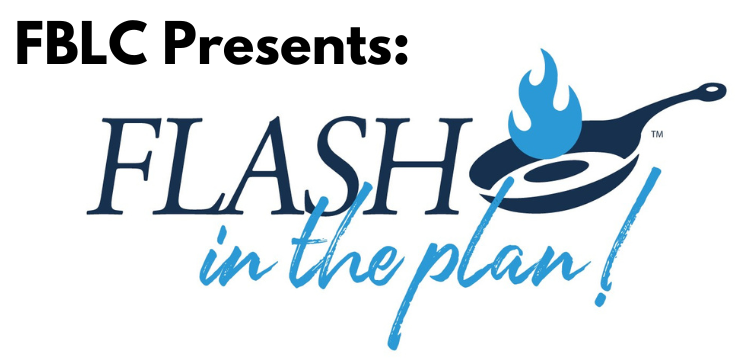FLASH IN THE PLAN: Are Roth Employer Contributions For You?

Welcome to the new Flash in the Plan newsletter!
This newsletter is different from our other publications because it is designed with you, the Plan Sponsor, in mind. Our goal is to help make sure that you know about upcoming deadlines for the quarter and to highlight legal issues and considerations that should be discussed further with your third-party administrator (“TPA”) or other pension professional supporting your plan. We certainly hope that you find it informative, and we welcome your feedback and suggestions for future topics.
Are Roth Employer Contributions For You?
By: Alison J. Cohen, Esq.
For this quarter, we wanted to highlight the new option available under SECURE 2.0 for a plan to permit certain employees to elect to have employer contributions funded as Roth instead of pre-tax. Roth 401(k) contributions have been permitted by law since 2006. If your plan allows employees to make Roth 401(k) contributions, you may already be familiar with this concept. Roth contributions work like this: Instead of the traditional 401(k) contributions, which are contributed on a pre-tax basis, employees pay taxes on Roth salary deferrals in the year in which they are taken from their pay. Then, when the employee takes a distribution from the plan, Roth amounts are paid out tax-free. Even better, if the distribution from the plan happens under certain circumstances –after the attainment of age 59½ or on death or disability and after the Roth account has existed in the plan for at least five years – the employee may avoid tax on the earnings, as well.
The new SECURE 2.0 provision allows Plan Sponsors to permit participants who are 100% vested in their employer contributions to elect to have these contributions also treated as Roth.
This employee election doesn’t change how the company contributes the funds to the plan or how it reports the deduction for its contribution. The employer contribution gets deposited like normal. Once the amount is deposited into the participant’s account, the recordkeeper will reflect it as a Roth amount in the account, and will issue a tax form to the participant (Form 1099R) to be filed with his or her tax return. That’s it for the plan!
In our experience, there are many participants – particularly younger employees – who are very enthusiastic about the Roth contribution option, both for their own contributions and for the employer’s contributions. There may be special considerations for these types of Roth amounts, however, not the least of which is the fact that tax withholding does not apply to the reclassified employer contributions. This means that, without more advanced planning, a participant may be unprepared to pay the taxes on the Roth employer contributions that will become due in April of the following year, when his or her personal return is filed.
As with almost all new developments, it may take some time for service providers to upgrade their systems to enable Plan Sponsors and participants to take advantage of Roth employer contributions. These amounts must be tracked and accounted for separately from any existing pre-tax employer contributions in the plan’s recordkeeping system. This may also add a layer of complexity to your contribution remittance process. If you are getting inquiries from your participants about adopting this option in your plan and you are interested in doing so, you should talk with your TPA to confirm whether they and your recordkeeper are ready to make that happen. Furthermore, your TPA may have ideas or educational materials available about how to help your employees decide if this option is good for them and to be ready for the tax ramifications.
If you have questions about Roth employer contributions or about retirement plans, please let us know. We are, after all, your ERISA solution!
What Should You Be Doing Now?
Here’s what is usually happening at this time of the year:
- Get those amendment requests in for 2025! If you have a calendar year plan, and you want to make changes to employer contribution formulas, allocation requirements, or add a safe harbor matching contribution, you need to get these requests into your service provider now. Because of the high volume of requests for a January 1 change, many vendors have an early cut-off for these amendments.
- It’s Notice Season. For calendar year plans, annual notices are required to be distributed usually no later than December 1. These notices include Qualified Default Investment Alternatives (QDIA), safe harbor, and automatic enrollment. If your Form 5500 was on extension, you may also need to send out your Summary Annual Report (SAR), if applicable.
- Pension projections for 2024 and 2025 … If you have a pension plan and you think you may not be able to fund at your normal level for 2024 or 2025, talk to your actuary now.
- Plan Governance. Have you met recently with your financial advisor and TPA to make sure that the plan and its investments are all running smoothly? Make sure that you document these meetings with minutes for your files (and that you keep the minutes in your files)!
- Time for a Change? If you are considering changing vendors in early 2025, now is the time to start the process. Many recordkeepers cut off January 1 conversions as early as September or October 1.
- Enrollment Season. We know HR folks are busy with health and welfare enrollments in the 4th quarter. January 1 is also a big enrollment date for retirement plans. Talk to your financial advisor or other service provider about coordinating enrollment meetings and ordering any enrollment kits you may need. If you have automatic enrollment, make sure these get timely started for newly eligible participants that don’t opt out.
- Posted by Ferenczy Benefits Law Center
- On September 3, 2024


